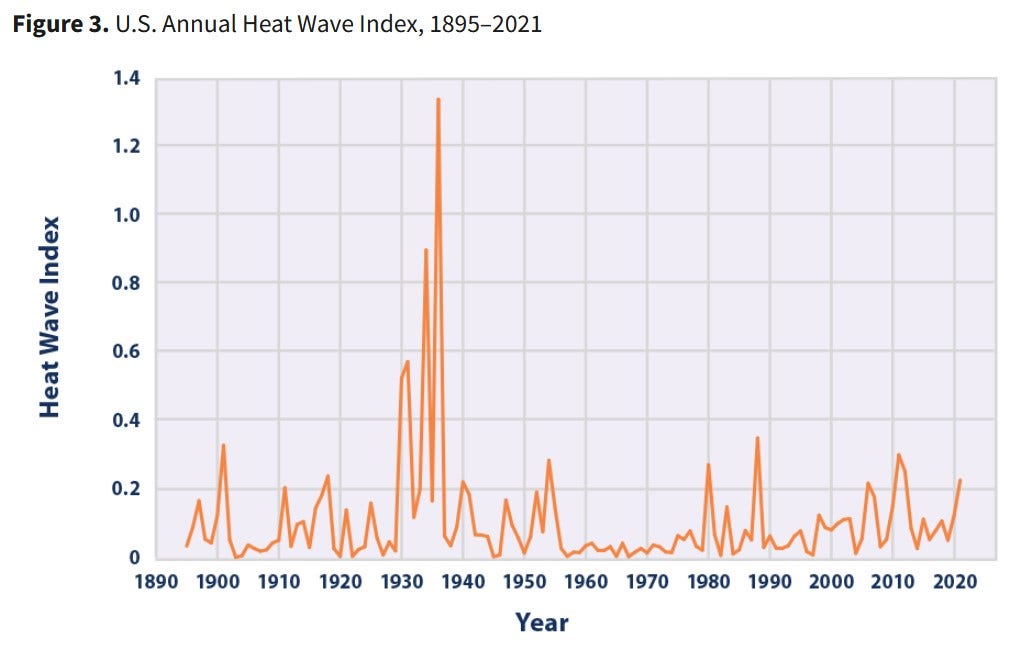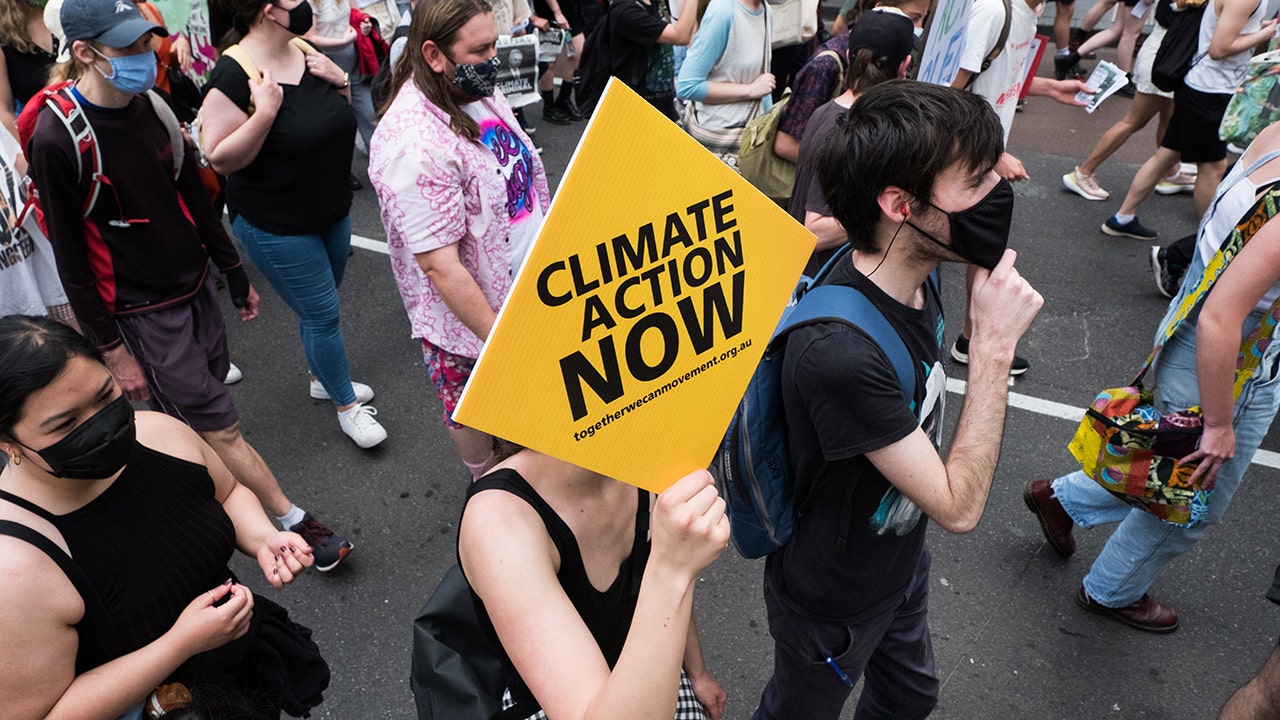- Banned
- #1
It looks like the heat most of the US is experiencing this summer is nothing more than weather as usual and not as bad as other recent times.
In the 1930s, the government's Heat Wave Index was four times higher

Every summer, heat waves inevitably hit the United States and other parts of the world, causing climate alarmists and left-leaning media outlets to demand dramatic, disastrous changes to the global energy system. Unfortunately, this summer is no different.
On Tuesday, U.S. media outlets published a wave of stories about supposedly "historic" heat waves in Europe and North America. For example, the Washington Post published an article titled "Heat waves in U.S., Europe ‘virtually impossible’ without climate change, study finds."
Similarly, Axios published a story titled "Historic and enduring U.S. heat wave, by the numbers."
Although certain parts of the United States have undoubtedly experienced strong heat waves this summer, there’s no reason to believe these weather events are evidence that the world is hurtling toward a climate change catastrophe. In fact, the best available evidence suggests that heat waves recorded a century ago were more problematic than anything we’re seeing today.
Government researchers have been tracking heat waves for more than 100 years. According to data from the U.S. Climate Change Science Program, which is made available by the Environmental Protection Agency, the annual heat wave index for the contiguous 48 states was substantially higher in the 1930s than at any point in recent years. In some years in the 1930s, it was four times greater or even more.
Additionally, the National Oceanic and Atmospheric Administration (NOAA) has a large database of daily temperatures that goes back to 1948. NOAA used 1,066 weather stations located across the United States to collect this data.
According to NOAA, huge swaths of the United States have experienced a significant decrease in abnormally hot days recorded since 1948, especially in the Midwest and northern and eastern Texas.
Although it’s true that some parts of the United States have seen the number of hotter-than-usual days increase over the past 70 years — including in California and the New York metropolitan area, both of which happen to be areas where a large number of media outlets are located — most weather stations have shown no meaningful changes or even declines.

 www.foxnews.com
www.foxnews.com
In the 1930s, the government's Heat Wave Index was four times higher

Every summer, heat waves inevitably hit the United States and other parts of the world, causing climate alarmists and left-leaning media outlets to demand dramatic, disastrous changes to the global energy system. Unfortunately, this summer is no different.
On Tuesday, U.S. media outlets published a wave of stories about supposedly "historic" heat waves in Europe and North America. For example, the Washington Post published an article titled "Heat waves in U.S., Europe ‘virtually impossible’ without climate change, study finds."
Similarly, Axios published a story titled "Historic and enduring U.S. heat wave, by the numbers."
Although certain parts of the United States have undoubtedly experienced strong heat waves this summer, there’s no reason to believe these weather events are evidence that the world is hurtling toward a climate change catastrophe. In fact, the best available evidence suggests that heat waves recorded a century ago were more problematic than anything we’re seeing today.
Government researchers have been tracking heat waves for more than 100 years. According to data from the U.S. Climate Change Science Program, which is made available by the Environmental Protection Agency, the annual heat wave index for the contiguous 48 states was substantially higher in the 1930s than at any point in recent years. In some years in the 1930s, it was four times greater or even more.
Additionally, the National Oceanic and Atmospheric Administration (NOAA) has a large database of daily temperatures that goes back to 1948. NOAA used 1,066 weather stations located across the United States to collect this data.
According to NOAA, huge swaths of the United States have experienced a significant decrease in abnormally hot days recorded since 1948, especially in the Midwest and northern and eastern Texas.
Although it’s true that some parts of the United States have seen the number of hotter-than-usual days increase over the past 70 years — including in California and the New York metropolitan area, both of which happen to be areas where a large number of media outlets are located — most weather stations have shown no meaningful changes or even declines.

It's not climate change that's causing heat waves this summer but no one wants to explain why
Climate change isn't causing this summer's heat waves. In the 1930s, the U.S. Heat Wave Index was four times higher. But now, the media pounce on the idea the earth is warming.




